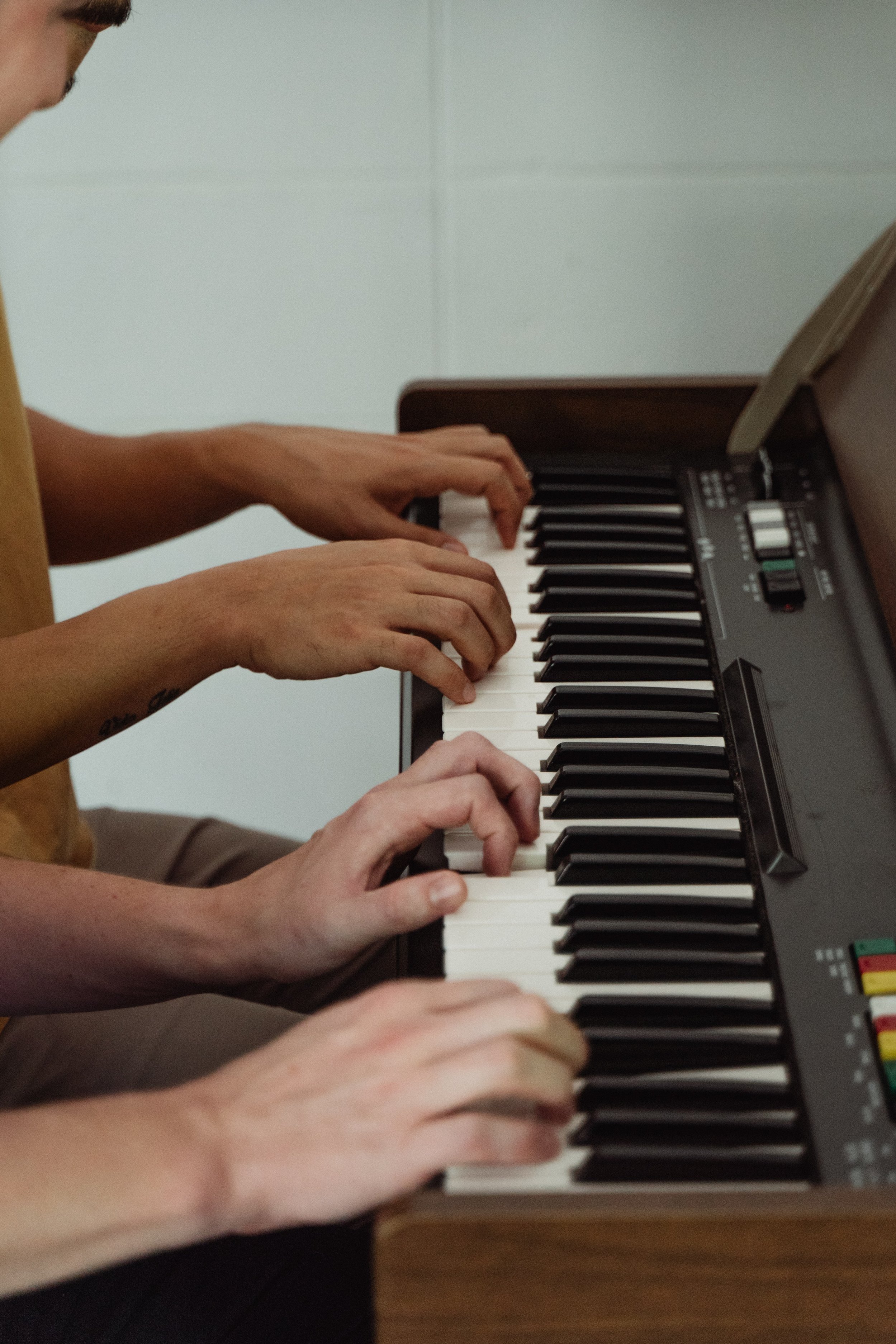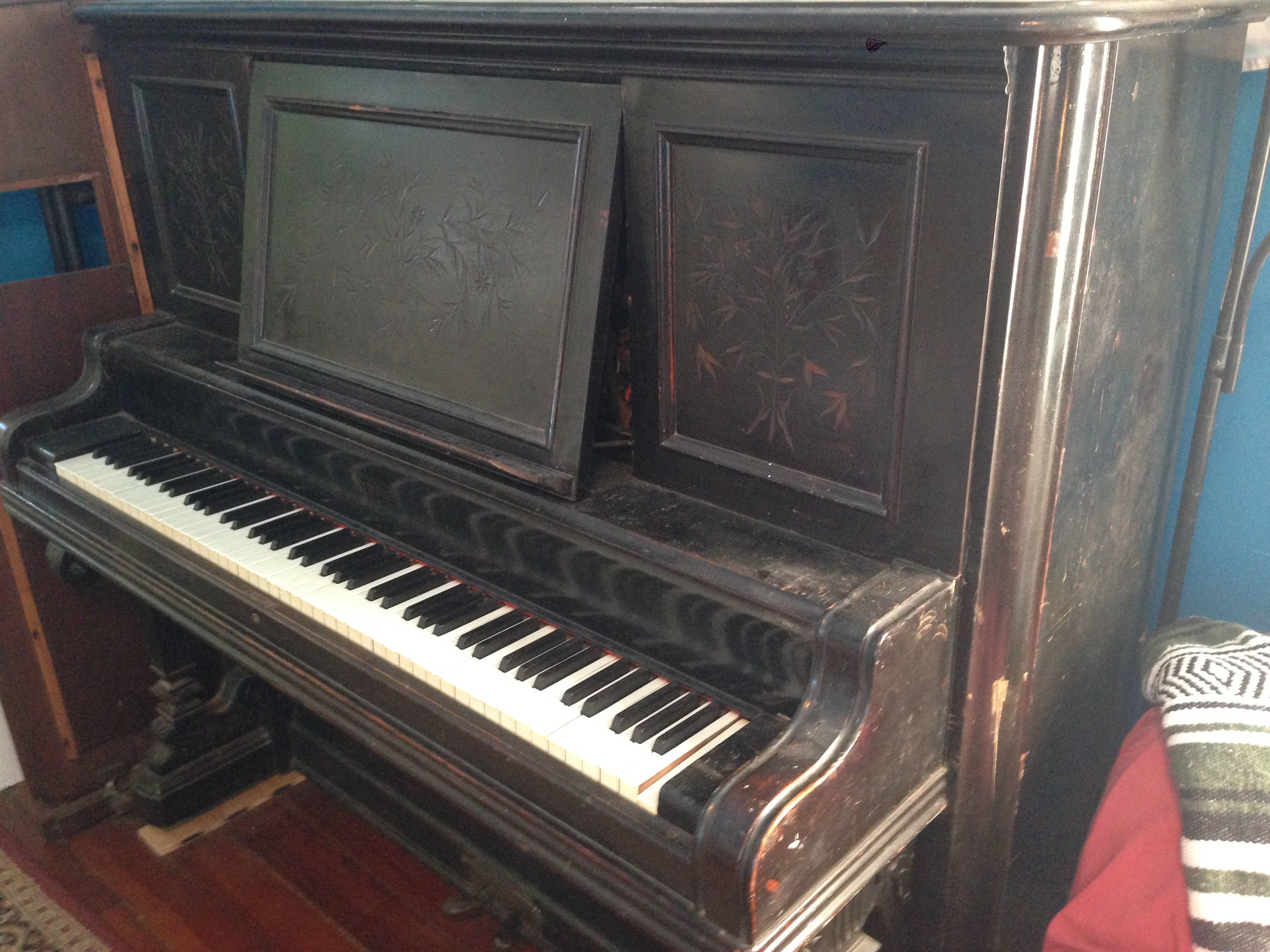My tool case. Behind the upper panel are replacement strings. Under the lower panel are adhesives, solvents, lubricants, gloves, and assorted pieces of felt and leather.
One of the most common questions I get when I show up at a client's door is “Where did you park?” For some reason, people are very concerned with the well-being of my vehicle. The answer to their question is, of course, “nowhere” as I don't own a car. However, out of fear of being judged as unprofessional, I usually say something along the lines of “Oh, I'm just down on the corner.” This isn't completely false, as my bicycle is usually locked up down on the corner.
Many technicians on piano tuning forums write of dragging large rolling suitcases from their car into client's homes for every job. Forums are also full of references to keeping all kinds of rarely used tools and materials in the trunk of the tuner's car just for that one or two jobs a year that they might be needed for.
This seems absurd to me. One of the great things about tuning is that there are only three absolutely essential tools: a tuning wrench, a set of mutes, and either a tuning fork or an electronic tuning device. Sure, some jobs require tools other than these, but many tunings are performed where the “big three” are the only tools that are touched by the technician.
I carefully select the tools that I carry with me to maximize utility and minimize volume and weight. I bring one tool-case to all of my tunings. The tool-case fits on the front rack of my bicycle and it contains all the tools I need to complete 95% of the tunings I go on. Anything that requires more in depth work gets a second visit during which I bring the special tools and supplies needed. A big part of knowing which tools to bring is having a conversation with my client before I even show up at the door. When was the last time the piano was tuned? Where did it come from? Does the piano have any other issues besides the tuning? If I know the specific piano's problems ahead of time, I don't need to bring 50 pounds of tools and supplies with me. Five to ten pounds will almost always suffice.
The other important part of piano tuning by bicycle is maintaining a small service area. My service area is anywhere within about a five-mile radius around my house. Any calls I get from outside this area are referred to another tuner who gives me a finder's fee. Sure, I make less money by turning down these calls, but I also am saving gobs of money on auto loans, insurance, gas, parking, and repairs. Not to mention the stress of driving, which many people don't seem to take into account.
As far as I can tell, cycling piano tuners are pretty few and far between. I have only found two others – one in Chicago and one in the UK. There may be more out there who, like me, don't generally advertise their two-wheeled transport. In “The Secret Life Of Pianos” a piano tuner is profiled who rides a motorcycle to his appointments. While not much different, I imagine that the motorcycle is seen as more of a “real” mode of transportation than the bicycle. Perhaps, as bicycling piano tuners become more commonplace, we can finally tell our clients “Oh, I parked my bike right there on the corner.”













I have been servicing and tuning pianos in NOLA since 2012 after first becoming interested in piano technology in 2009. With a background in teaching bicycle mechanics, I bring a methodical mindset and a love of sharing knowledge and skills to the rich musical culture of New Orleans.